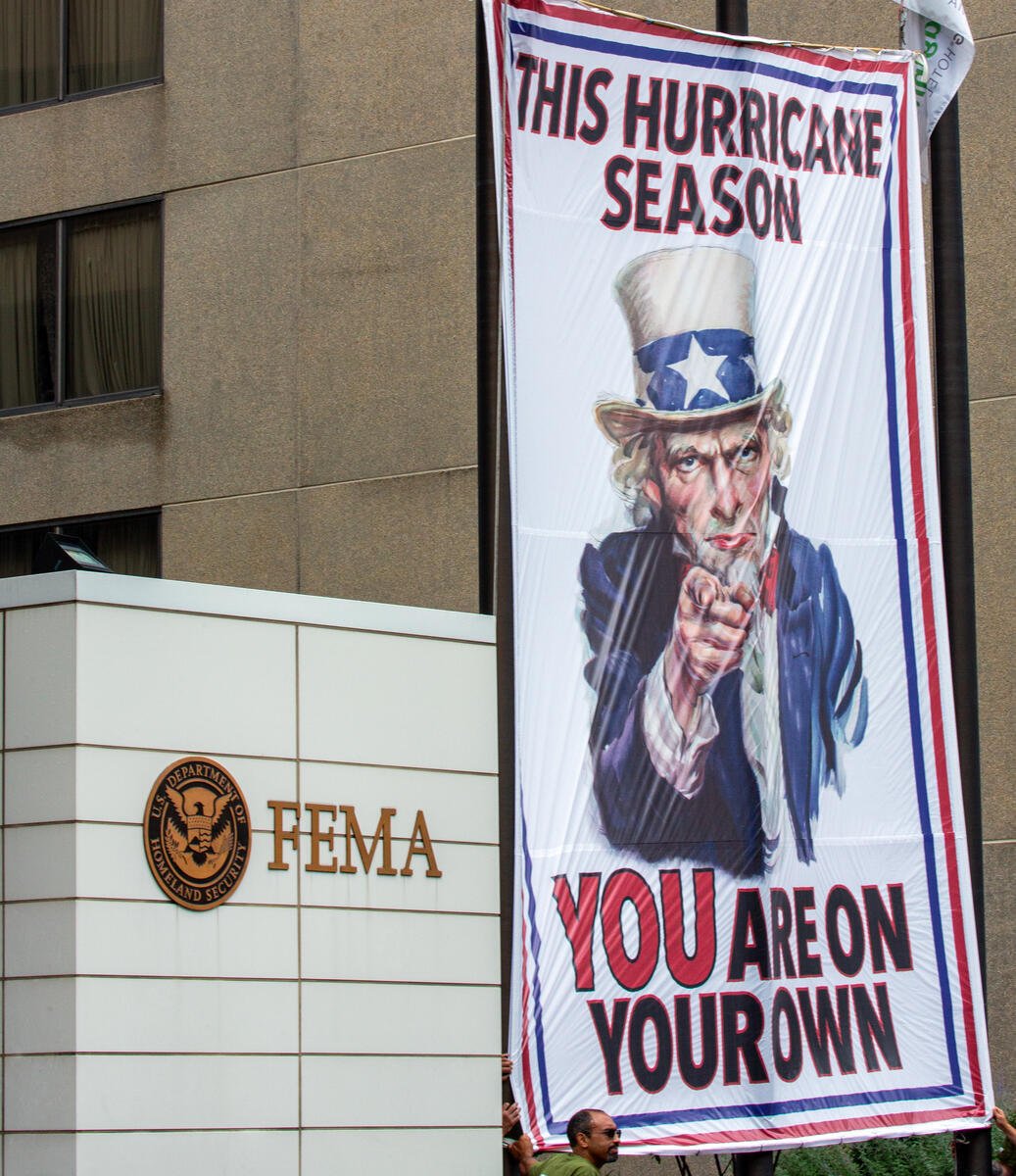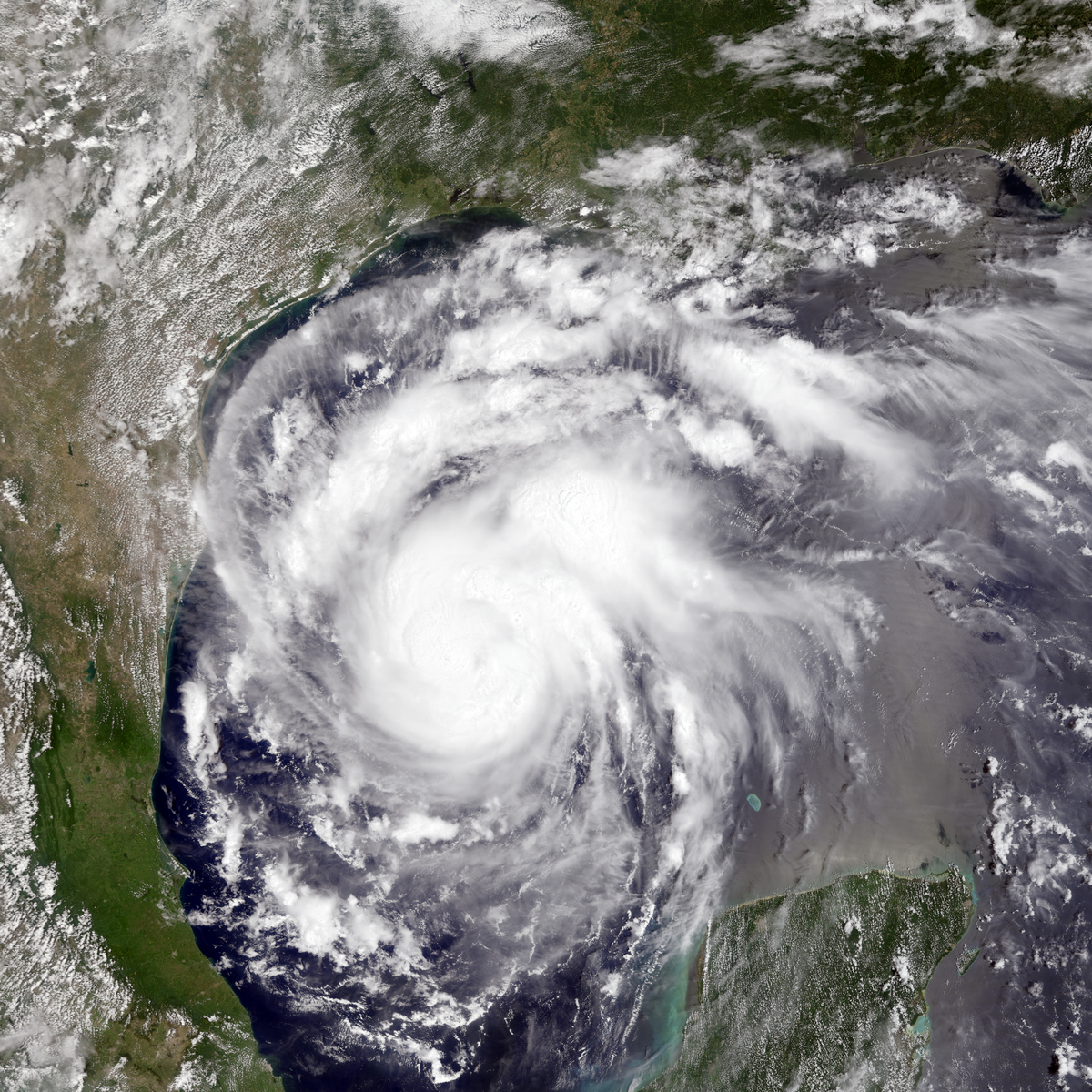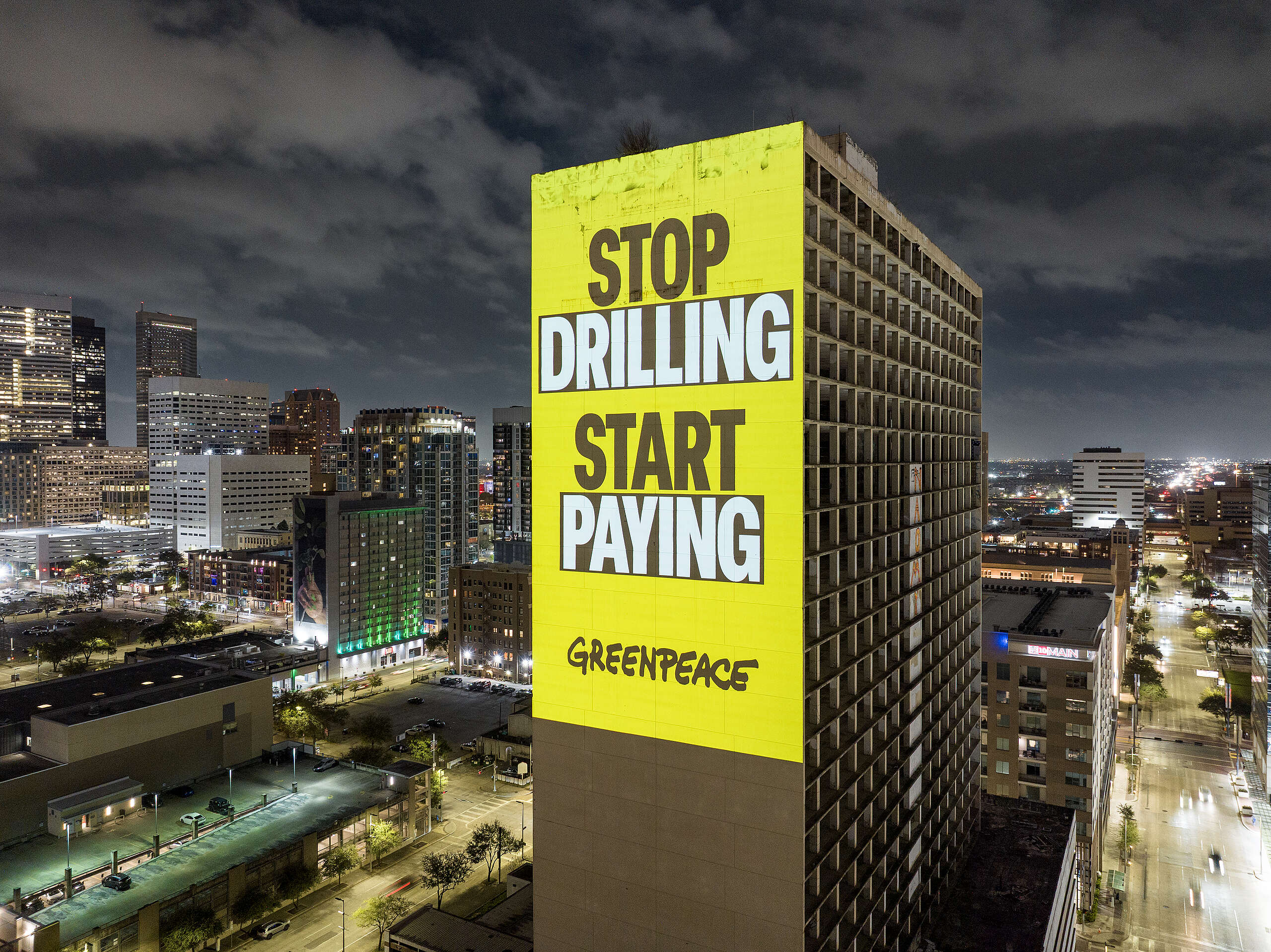Comparing the comet crisis in Don’t Look Up to the to the climate crisis in our world—and whether it’s too late to stop it

2022 is shaping up to be the worst year yet for the climate crisis, so it’s fitting that the #1 movie on streaming giant Netflix is a thinly-veiled satire about climate change.
Adam McKay’s star-studded Don’t Look Up uses the allegory of a large comet on a collision course with Earth to represent the very real climate threats we’re facing. The astronomers in the film try to alert the media to the urgency and implore the U.S. president to take action before it’s too late. However, they are routinely ignored.
The film is inspiring impassioned conversations around both the climate crisis itself and how we talk about it. This makes sense, as the characters in the movie struggle with how to present their findings to different audiences. And, of course, the movie itself is a big budget piece of climate communication.
It’s thrilling to see so many folks engage with these topics. One question we keep getting asked is, “So, how accurate is Don’t Look Up?” Let’s take a look at how the comet crisis in the film compares to the climate crisis in our world.
SPOILER ALERT: major Don’t Look Up details below!
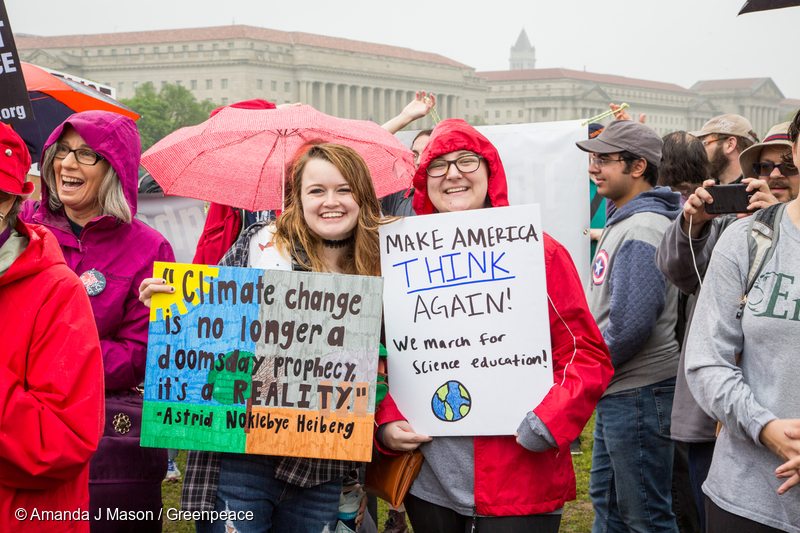
People participate in the Washington D.C. March For Science held on Earth Day 2017.
How does Don’t Look Up‘s Comet Crisis stack up to the Climate Crisis?
COMET: Scientists discover the comet and identify the threat.
CLIMATE: Scientists have been tracking climate change for decades, but Indigenous communities have been tracking it for centuries.
COMET: A comet will collide with Earth in exactly 6 months and 14 days.
CLIMATE: Climate change is more insidious than a simple countdown to destruction. Gradual changes are harder to observe. A simple countdown to destruction would be easier to explain.
COMET: The comet is a looming threat that doesn’t impact anyone until it hits.
CLIMATE: In many ways, the climate crisis is already here.
COMET: The comet will wipe out all human life on the planet.
CLIMATE: Climate change won’t affect everyone at the same time, and the effects will not be evenly distributed across people.
COMET: The U.S. President could save everyone if they believed the scientists.
CLIMATE: The climate crisis is a collective problem that will require collective solutions. It’s not solely a U.S. issue and can’t be solved by any one individual.
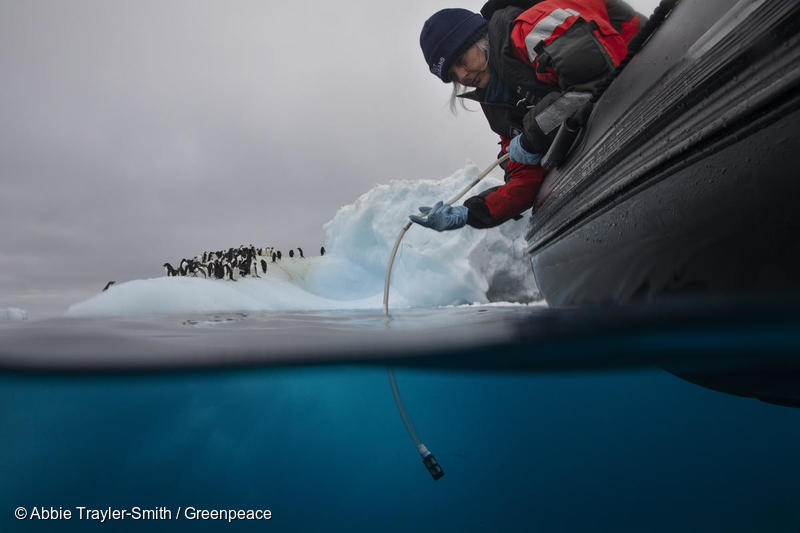
Dr Kirsten Thompson, lead scientist on the Arctic Sunrise takes water samples for eDNA sampling near Paulet Island in the entrance of the Weddell Sea, Antarctica.
COMET: The media doesn’t care about a fast-approaching planet-killing comet because it’s too sad of a story.
CLIMATE: Climate journalism has come a long way in the last five years, and there are many amazing climate journalists! But often, the mainstream media doesn’t capture the urgency of the crisis and are too willing to take polluting corporations at their word.
COMET: Science communication is really hard to do well.
CLIMATE: Don’t we know it! The story of climate change doesn’t fit into a neat three act structure, there’s no silver bullet, and no individual hero to save the day at the final hour.
COMET: The U.S. can solve the threat by launching nuclear weapons at the comet.
CLIMATE: We know how to solve climate change, but it will take a global effort. It will require action from ALL people.
COMET: Tech billionaires won’t save us from the comet.
CLIMATE: Tech billionaires won’t save us from climate change. The richest people on the planet aren’t as motivated to solve the crisis since they’ll be amongst the last to feel it.
COMET: Celebrities are bad because they distract ‘everyday’ people from the comet.
CLIMATE: The fault for the climate crisis rests on corporations and governments, not individuals. Also, people can be interested in more than one thing at a time. On top of this, celebrities often use their platforms to highlight the climate crisis. See: Jane Fonda and Fire Drill Fridays. See also: the celebrities in Don’t Look Up!
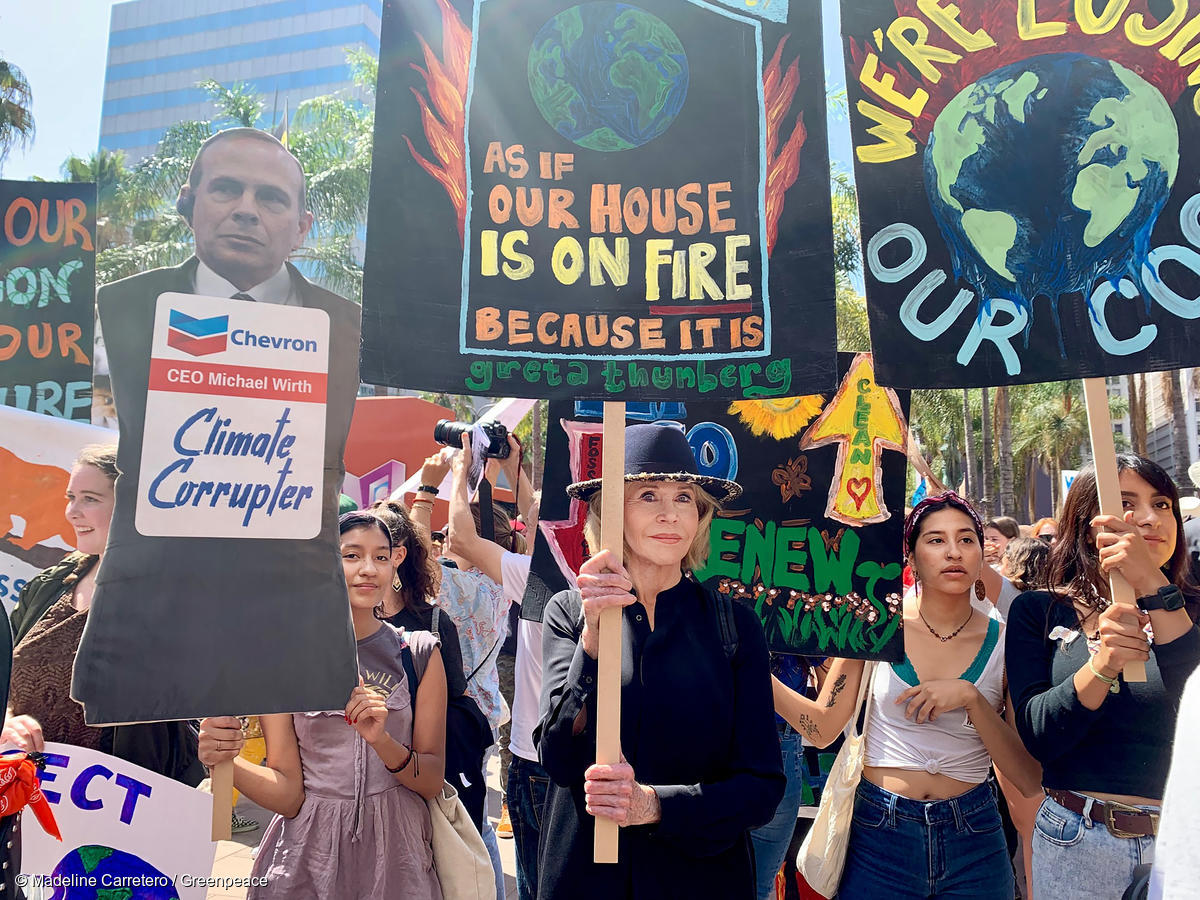
Actress, Entertainer, Writer and Greenpeace Activist Jane Fonda participates in the youth-led climate strike. People in Los Angeles and across the U.S. demanded transformative action to address the climate crisis, and called on leaders to choose to side with young people, not fossil fuel executives polluting the planet for profit.
COMET: They have a better shot at resolving the comet crisis if they act quickly. Waiting will require much more drastic measures.
CLIMATE: We have a better shot at resolving the climate crisis if we act quickly. Waiting will require much more drastic measures.
COMET: All we need to do is believe scientists.
CLIMATE: To solve climate change we need to believe not only scientists, but also Indigenous people and communities on the frontline of fossil fuel extraction and combustion, communities who are already experiencing climate change.
COMET: We’re all going to die!
CLIMATE: We know that swift collective action can be taken. For example, we have seen people, governments, and corporations drastically change their ways of life to deal with the covid pandemic.
It’s not too late, but we need your help
Satire doesn’t require absolute accuracy to be effective. (It wouldn’t be satire if it did.) While the movie simplifies the climate crisis, it has clearly resonated with many people on an emotional level.
We want everyone to know that we still have time to solve the climate crisis.—but we need each of you to join the fight. We won’t even ask you to stop caring about pop stars.

